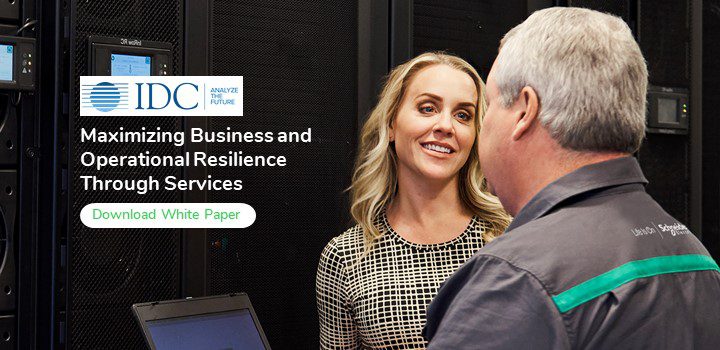Because the business landscape is subject to constant change, many organizations choose to focus their time and energy on core operations and outsource electrical infrastructure support to firms offering specialized engineering and maintenance services. Partnering with the right service provider can be transformative to a business’s bottom line. Employing the right digital services strategy can shave as much as 50% from overall maintenance costs, increase energy efficiency by 30% and cut unplanned downtime by 25%. The business case for working with digital service experts has always been a strong one, but recent innovations in broadband connectivity and predictive software, combined with advances in remote monitoring and management are poised to rewrite the value proposition for professional services going forward.
A well-defined digital plan empowers new technology
At a recent panel discussion amongst CEOs at the World Economic Forum, the impact of emerging technologies such as Artificial Intelligence (AI), the Internet of Things, (IoT), Edge computing, and advent of 5G connectivity was examined in detail. The speakers affirmed how, in their organizations, those platforms are redefining the way stakeholders think about industries, economics and business models. Recent connectivity innovations are also reshaping their business’s cultural, organizational and economic practices, requiring constant adaptation. Panel participants also acknowledged that new technologies can sow the seeds of distraction, rather than increase productivity. Digital services providers can avoid this conundrum by dedicating themselves to creating value, forming professional relationships and enhancing business outcomes for their customers. A laser-like focus on how best to connect a client’s assets, collect data, and unite their physical and digital worlds is what ensures the technology they deploy generates improved performance.
Moving from products to outcomes
A case in point is the growing need for outcome-based services. Even though digital disruption has been ongoing for decades, many maintenance firms still follow the break then fix model of service delivery, or time-and-materials business models. Customers want a predictable service, one based on tangible results, rather than effort expended. This approach shares the project risk more equitably between client and service provider and gives customers added confidence that digital security and data integrity will always be at the forefront of the service plan. High-performance outcomes are where today’s new digital connectivity technologies offer game-changing asset management possibilities. When merged into the right technology platform, connected digital services enable technicians to do more than merely react to network issues and outages. Increasing digital intelligence, combined with the enhanced connectivity and reduced latency inherent in Edge computing, empower proactive maintenance and monitoring, regardless of geographic location and electrical infrastructure type. An integrated, customer-centric digital vision, combined with hands-on expertise, technical talent and exceptional service delivery is what will help companies in today’s hyper-competitive environment extract more value from their physical assets. Whether it’s digital services for buildings, industry, IT or grid, it is by offering knowledge-as-a-service, that providers can deliver both the insight and return on investment their customers need.

Delivering results through smart use of technology
Even though remote connectivity has been around awhile, the shift to IoT and comprehensive data integration arms field technicians with the intelligence needed to apply best practices in proactive asset maintenance programs. Now, through condition-based indicators and alerts, the true service life of equipment can be determined remotely, response time improved, parts inventories reduced and maintenance performed on smarter, as needed schedules. Beyond extending service life and eliminating unnecessary site visits, proactive maintenance enabled through digitized connectivity allows human expertise to be focused more productively. Fewer technicians can effectively oversee larger and more complex networks, while individual assets can be evaluated and then prioritized for servicing based on their criticality within the system.
Combine these advantages with today’s richer data integration and even networks with dissimilar equipment can be viewed holistically, making it much easier to predict equipment failure that could cause downtime or injuries. The ultimate result of such end-to-end transparency is that unplanned outages become easier to mitigate while the financial exposure they carry becomes substantially reduced – basically less cost through better planning.
One-size-fits-all services a thing of the past
Outcome-based services provide benefits by connecting service providers directly to their customer’s business objectives, often shifting their relationship to one based on trust and long-term goals. Companies that embrace new technologies and manage change will stay ahead of the curve and on a long term path to more successful partnerships.
To learn more about improving your business digital capabilities, visit our digital services page.
[Tweet “@SE_FAbbal: “Outcome-based services provide benefits by connecting service providers directly to their customer’s business objectives”.”]


